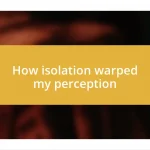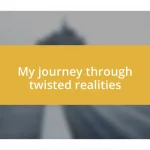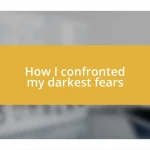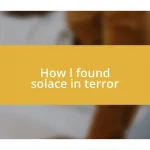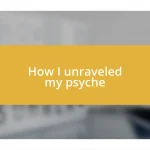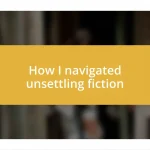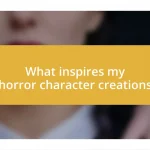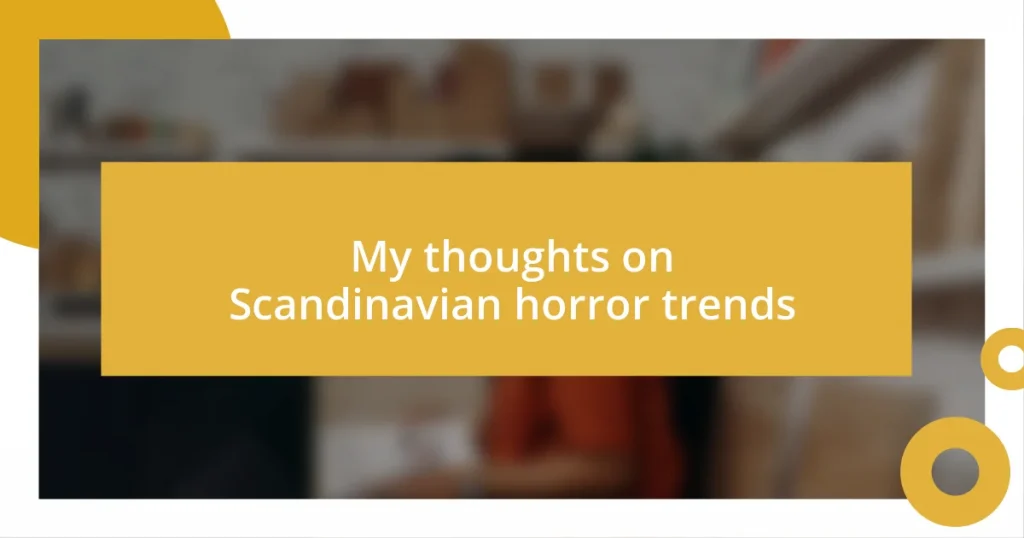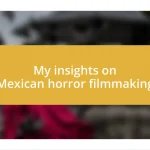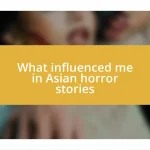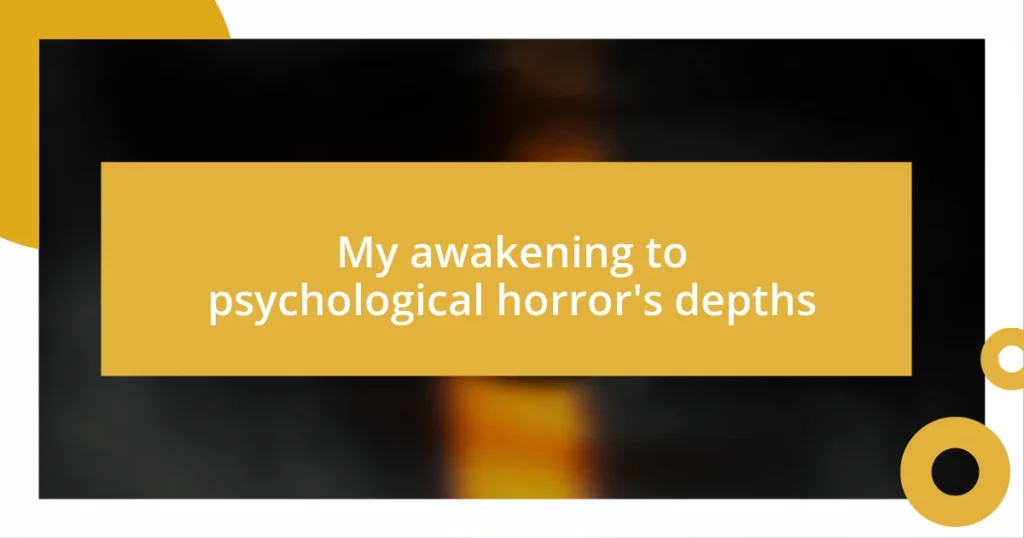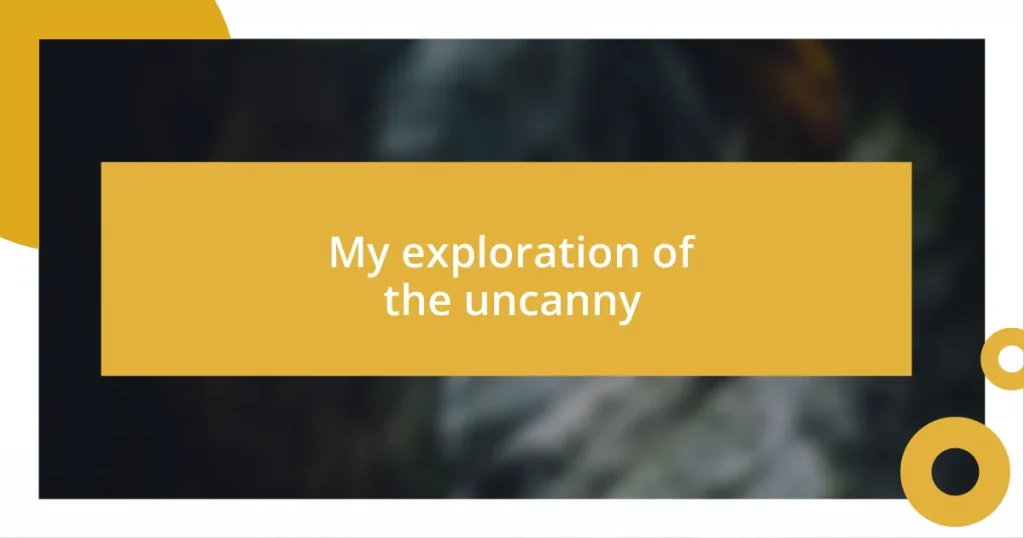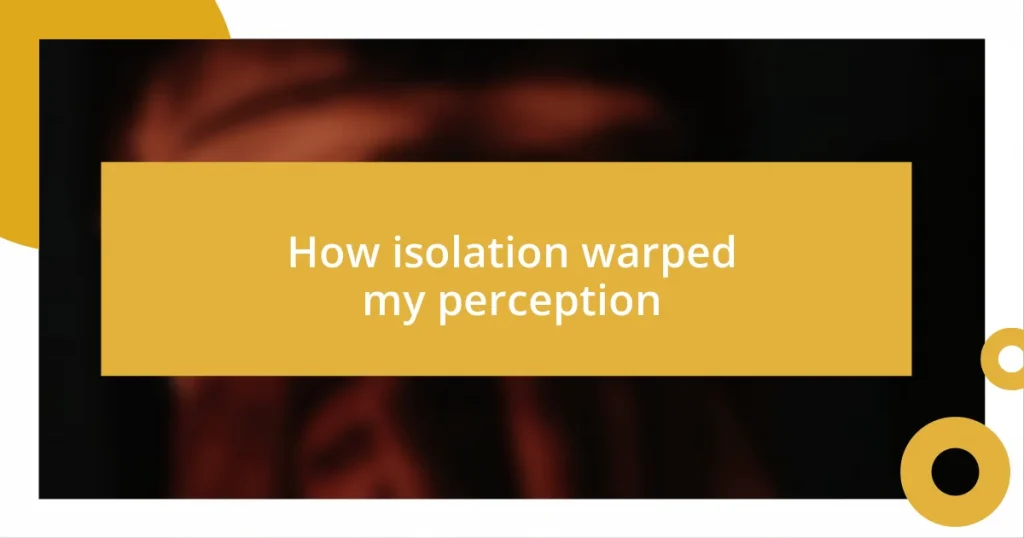Key takeaways:
- Scandinavian horror uniquely combines psychological depth, societal commentary, and nature’s chilling influence, creating a haunting atmosphere that evokes existential fears.
- Influential films like “Let the Right One In” and “The Witch” explore deep themes such as loneliness and family disintegration, shaping the emotional core of the genre.
- The future of Scandinavian horror is poised for innovation, potentially addressing contemporary issues like climate change and mental health while incorporating diverse voices and hybrid genres.
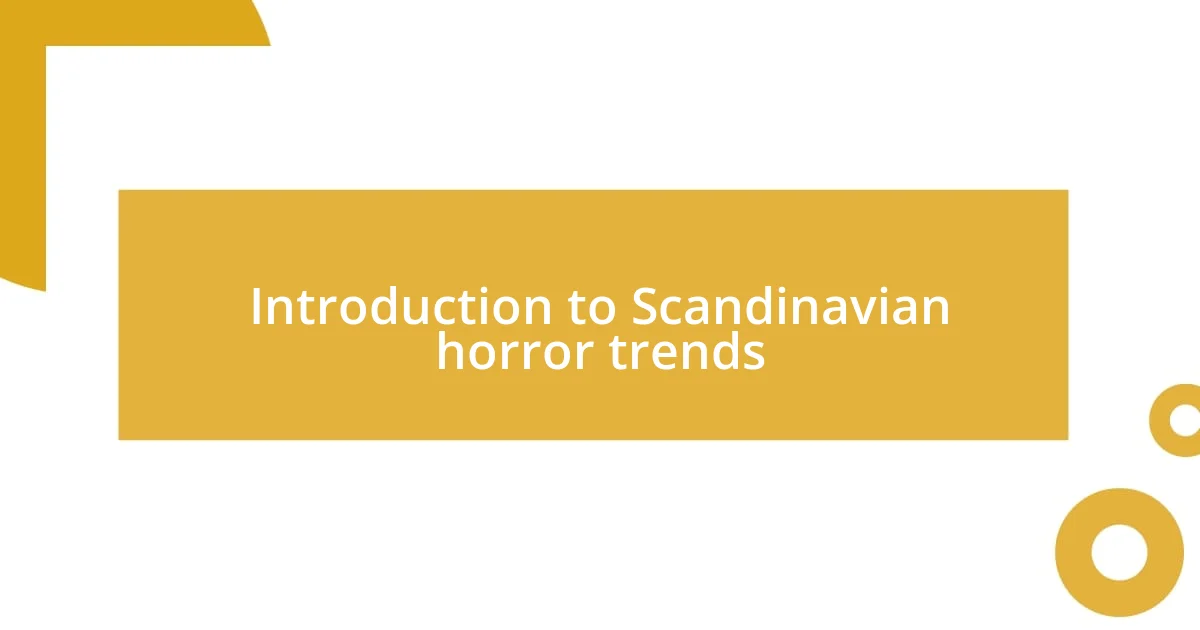
Introduction to Scandinavian horror trends
Scandinavian horror is a fascinating genre that captivates with its chilling storytelling and atmospheric settings. From eerie folklore to the haunting beauty of the winter landscape, these elements deeply influence how fear is depicted. I remember first watching a Scandinavian horror film and feeling that it wasn’t just about jump scares; it was that unsettling sense of inevitability that really got under my skin.
Many people wonder what makes Scandinavian horror stand out. In my experience, it’s the unique blend of psychological tension and societal commentary that lingers long after the credits roll. The characters often grapple with existential themes and the weight of personal and collective trauma, making me reflect on my own fears and societal issues.
Moreover, the genre often employs a slow-burning narrative, expertly building suspense over time. I found myself drawn into this pacing, allowing the horrifying elements to seep into my consciousness. Have you ever found yourself unsettled by something that seemed so ordinary? That’s the beauty of Scandinavian horror—it takes the familiar and twists it into something profoundly disturbing.
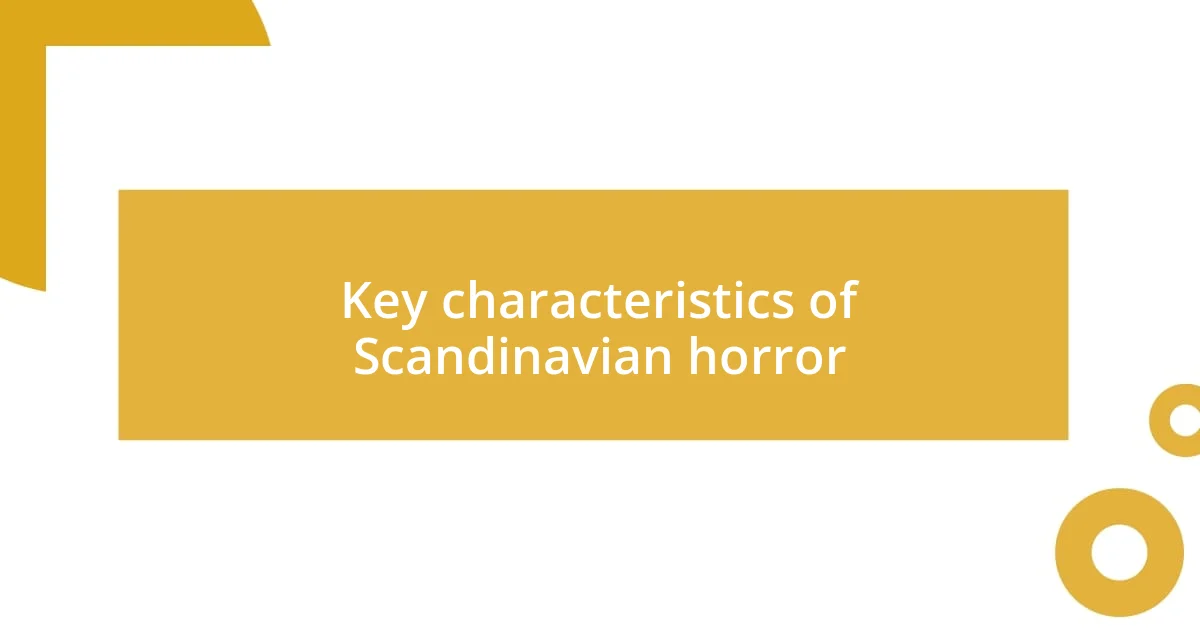
Key characteristics of Scandinavian horror
Scandinavian horror thrives on its eerily calm settings that often mask the lurking dread beneath. One characteristic that intrigued me was the focus on isolation. Whether it’s the haunting silence of snow-covered villages or the dark waters of Scandinavian lakes, there’s an unsettling quality to the landscapes, making the characters’ despair feel palpable. I remember watching a film set in a remote cabin, and the way the vast, empty wilderness surrounded the characters profoundly highlighted their vulnerability.
Here are some key characteristics of Scandinavian horror:
- Psychological Depth: Characters often confront deep-seated fears and traumas.
- Natural Elements: Nature plays a crucial role, amplifying the sense of isolation or danger.
- Folklore Influences: Traditional tales blur the line between myth and reality, enhancing the eeriness.
- Gradual Tension: Plots unfold slowly, allowing anxiety to build rather than relying solely on shock value.
- Moral Ambiguity: Characters are often morally complex, adding layers to their dilemmas.
- Atmospheric Storytelling: The haunting visuals and sounds create a lingering sense of dread.
Reflecting on these traits, I notice that they don’t just evoke fear; they often leave me pondering the darker aspects of the human experience, making me appreciate the genre even more.
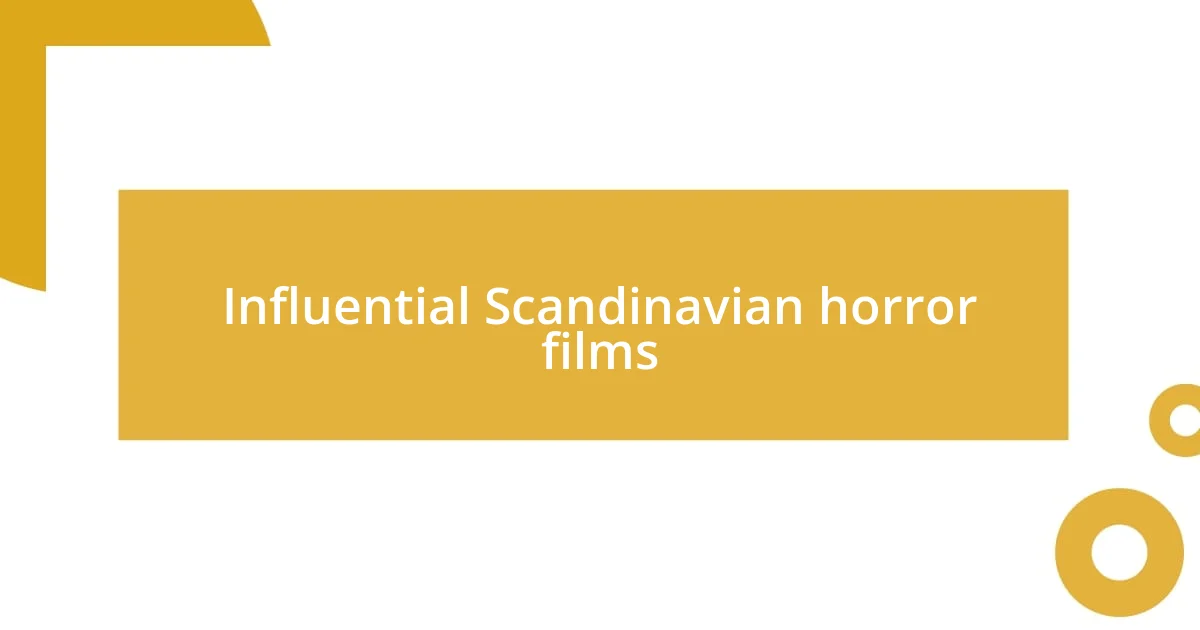
Influential Scandinavian horror films
Scandinavian horror films have undeniably shaped the genre, often pushing boundaries that leave a lasting impact on viewers. Take “Let the Right One In,” for instance. This film, with its haunting blend of childhood innocence and vampiric lore, struck a chord with me in how it so masterfully explored themes of loneliness and love wrapped in horror. I still recall the chilling scenes that blurred the lines between monster and protectiveness—constantly making me question who the real monster was.
Another significant film is “The Witch,” which, while rooted in New England folklore, has strong ties to Scandinavian influences that depict a family’s descent into madness. I felt profoundly moved by the portrayal of fear as a collective force, tearing apart their fabric of trust and love. It invites a closer reflection on how fear can be both a destructive and unifying experience within familial bonds, resonating deeply with anyone who has faced personal trials.
These films not only captivate with their narratives but also cultivate a unique emotional response, connecting personal and broader themes of humanity. They linger in my thoughts long after the credits roll, illustrating the impactful storytelling that defines Scandinavian horror. Below is a comparison table of these influential films:
| Film | Themes |
|---|---|
| Let the Right One In | Loneliness, Innocence, Nature of Evil |
| The Witch | Paranoia, Family Disintegration, Religious Apathy |
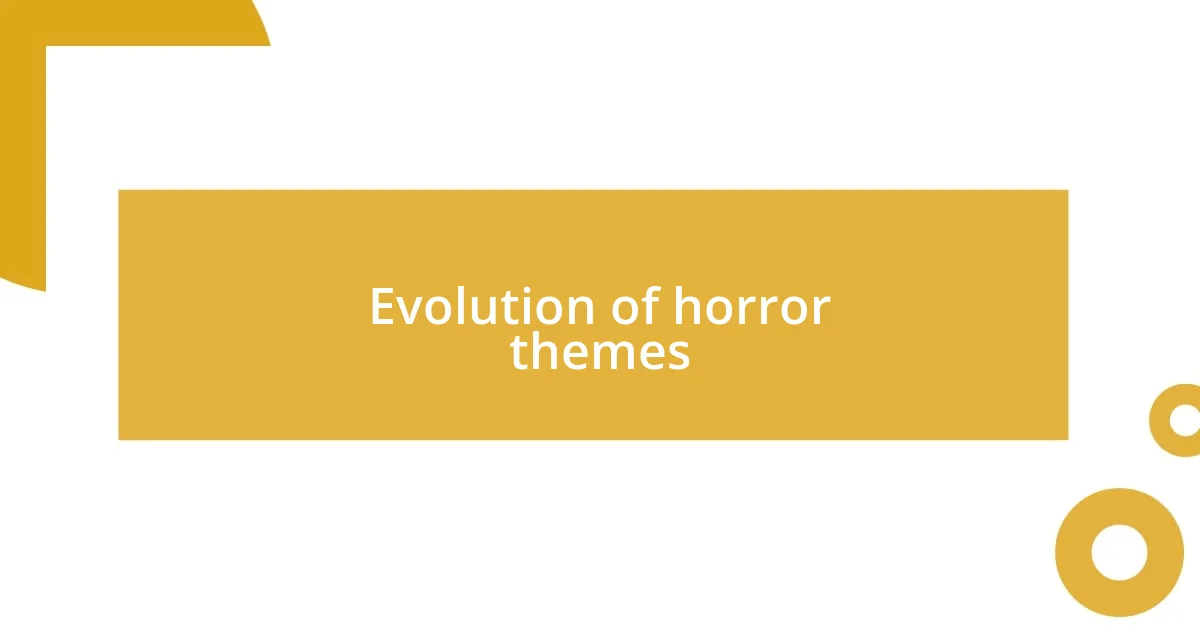
Evolution of horror themes
Horror themes have evolved significantly over the decades, often reflecting the societal anxieties of their time. I find it fascinating how early horror often revolved around monsters and the supernatural, yet Scandinavian horror has shifted this focus towards more psychological and existential fears. Watching films like “Midsommar” made me realize that the true terror often comes from human nature and the breakdown of social bonds, rather than from external threats.
In Scandinavia, there’s an emphasis on isolation that has become more pronounced in contemporary works. Take “The Ritual,” for example; the film’s gradual descent into psychological horror, set against breathtaking yet oppressive landscapes, evokes a feeling of entrapment. I often wonder how the settings enhance the emotional weight of the characters’ journeys. The encroaching wilderness serves as a constant reminder that sometimes the scariest monsters are not the ones hiding under the bed, but rather those lurking in our own minds.
There’s also a compelling interplay between folklore and modern life in Scandinavian horror, an element that intrigues me deeply. Films have begun to weave traditional myths into contemporary narratives—like in “Thale,” where folklore takes center stage. I can’t help but connect it to my own experiences with local legends that shape our cultural identity. How can tales from centuries ago still resonate with our current fears? It strikes me that storytelling, whether ancient or modern, serves as a mirror to our deepest concerns, making horror a timeless exploration of the human psyche.
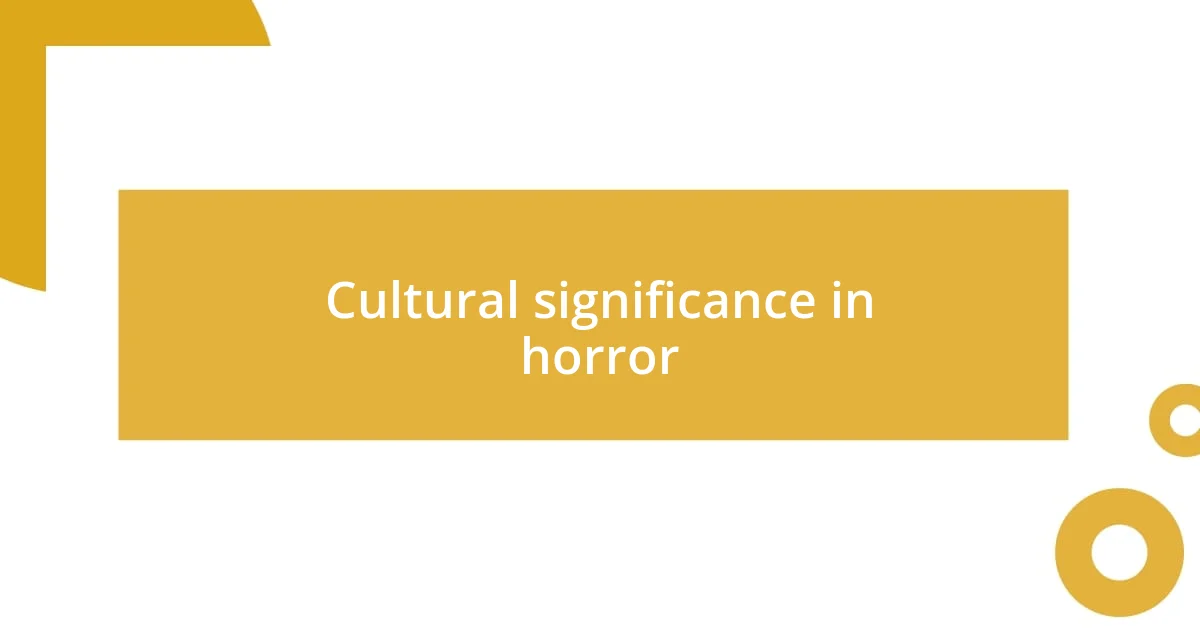
Cultural significance in horror
Cultural significance in horror is often deeply intertwined with the societal context from which it emerges. I remember discussing with a friend how Scandinavian horror films resonate so strongly with themes of nature and existential dread. It feels like these stories authentically reflect a collective cultural consciousness that is engaged with weathering long, dark winters and the isolation that can accompany them. Isn’t it interesting how the environment shapes our fears and storytelling?
Moreover, the exploration of psychological horror in Scandinavian cinema invites us to confront our own emotional demons. I reflect on films like “The Babadook,” which may not be Scandinavian but carries that same raw intensity. The narrative dug deep into the psyche, making me realize that true horror often revolves around unresolved grief and familial conflicts. I have experienced moments in my life that mirrored this—a building tension that just wouldn’t relinquish its hold, revealing how fear can also stem from within.
Ultimately, these narratives transcend mere entertainment; they serve as a form of cultural reflection and commentary. When I see films that embed local folklore into their narratives, I can’t help but think back to stories my grandparents told me. Those tales somehow linger in our collective memory, connecting generations and evoking a shared understanding of the fears that shape us. How many stories have been passed down, warning us of dangers that echo throughout history? It’s fascinating to consider how horror acts as a vessel for cultural expression, allowing us to explore the darker edges of our humanity while finding common ground through shared fears.
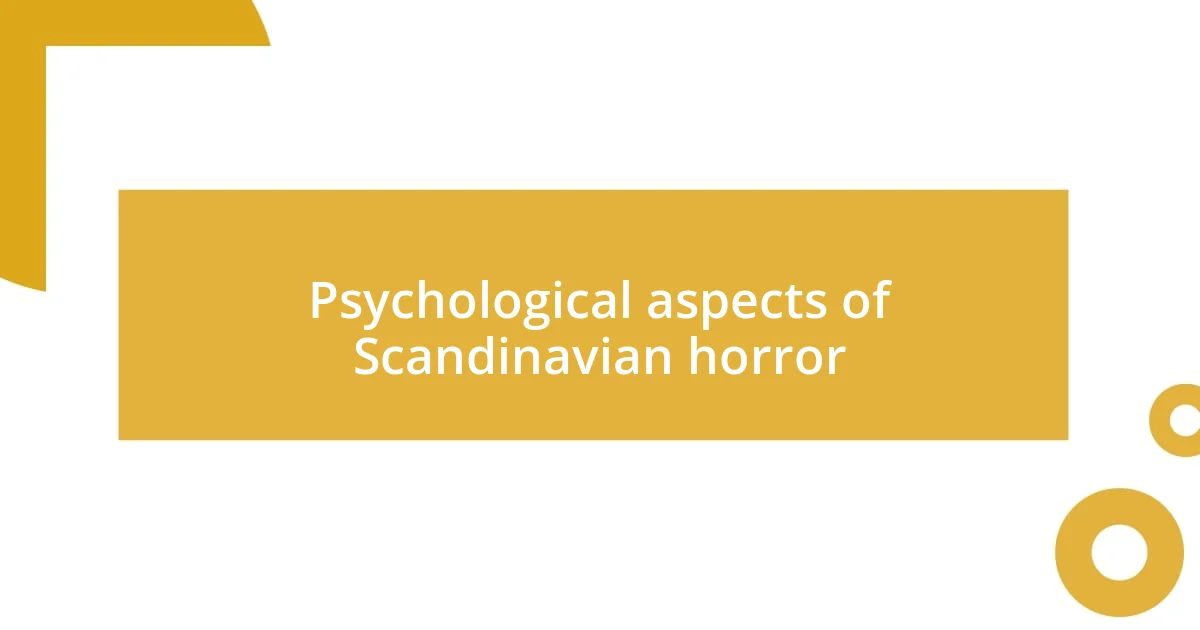
Psychological aspects of Scandinavian horror
The psychological aspects of Scandinavian horror really draw me in, especially in how they explore the fragility of the human mind. In films like “Hereditary” and “Midsommar,” you see characters fighting inner battles, and I often find myself reflecting on my own fears and vulnerabilities. Isn’t it striking how these narratives force us to confront our darkest thoughts, pushing us to question not just the characters but our perceptions of sanity?
Another dimension that fascinates me is the sheer sense of isolation that permeates many Scandinavian horror stories. I vividly recall watching “The Night House” on a night when I felt utterly alone. The atmosphere created by the hauntingly beautiful, yet eerily empty, settings added a weight to the psychological tension that resonates long after the credits roll. It made me think—how much does our environment influence our mental state? The desolation surrounding the characters often mirrors their internal struggles, suggesting that sometimes, the scariest monsters are those birthed from solitude.
What’s particularly poignant is how the narratives weave in themes of grief and trauma. I remember feeling a deep connection to the character’s loss in “The Chestnut Man,” which lingers in the air like a ghost haunting the edges of the story. It left me pondering—how do we cope with the shadows of our past? The emotional depth in these films elevates fear from mere thrills to a profound exploration of what it means to be human, reminding us that confronting our psychological demons is perhaps the most terrifying challenge of all.
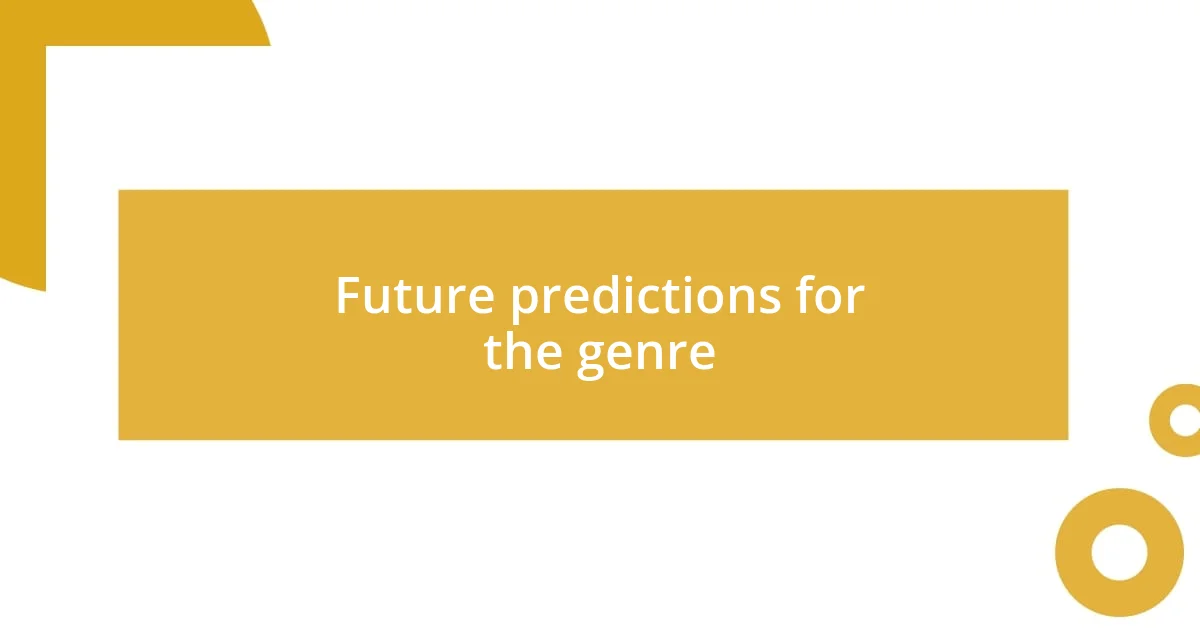
Future predictions for the genre
As I look ahead, I envision Scandinavian horror evolving to address contemporary societal issues more directly. The global landscape is rapidly changing, and horror has always been a reflection of our fears, whether they be climate change, mental health crises, or societal isolation. I can imagine filmmakers weaving these themes into their narratives, testing not just the viewer’s nerves but also their sense of social responsibility. How powerful would it be to see a story where the chilling atmosphere is a metaphor for environmental collapse?
I also anticipate a rise in hybrid genres, merging Scandinavian horror with fantasy or science fiction elements. I think back to the success of films like “Trollhunter,” where folklore is reimagined through a modern lens. It excites me to think about how we might see more innovative storytelling that delves into uncharted territories. Could we be on the brink of a subgenre that marries the eerie mystique of Scandinavian landscapes with supernatural elements, pushing boundaries and keeping audiences intrigued?
Finally, I believe that as streaming platforms continue to dominate, we’ll witness a greater diversity of voices within Scandinavian horror. This opens the door for underrepresented creators to share their unique stories and perspectives. I can’t help but feel that this infusion of varied experiences will enrich the genre, enabling it to grow in unexpected ways. Wouldn’t it be fascinating to explore horror narratives that blend personal trauma with cultural experiences, creating layers that resonate on multiple levels?


